Disclosure: This article contains affiliate links. We may earn a commission from purchases at no extra cost to you, which helps our travel content.
In the judicial system, we often speak of precedent—how past decisions shape our present understanding of justice. Walking through Annapolis is remarkably similar; each brick, cobblestone, and colonial building tells a story that has shaped America's identity. As someone who spends her days interpreting the law in Bangalore, I find profound respite in places where history's verdict is already written in stone and architecture. During a recent spring visit back to the States, I discovered that Annapolis offers couples an accessible window into America's colonial past without the hefty price tag of more prominent historical destinations.
Planning Your Constitutional Journey
As a judge, I've learned that preparation is essential to rendering fair decisions—the same applies to maximizing a historical tour. Annapolis may be compact, but its historical significance demands thoughtful navigation.
Before setting foot on those storied cobblestones, I recommend downloading the free Annapolis Historic District app, which provides GPS-guided routes and historical context for major landmarks. For those preferring tangible guides, the Annapolis walking tour map proved invaluable during my visit—its waterproof material withstanding both spring showers and my excessive note-taking.
While the Maryland State House and Naval Academy typically headline Annapolis itineraries, I found equal value in lesser-known sites like the Banneker-Douglass Museum and the William Paca House, where America's complex relationship with liberty and equality is thoughtfully presented. Like examining precedent in a difficult case, these sites offer nuanced perspectives essential to understanding the full historical record.
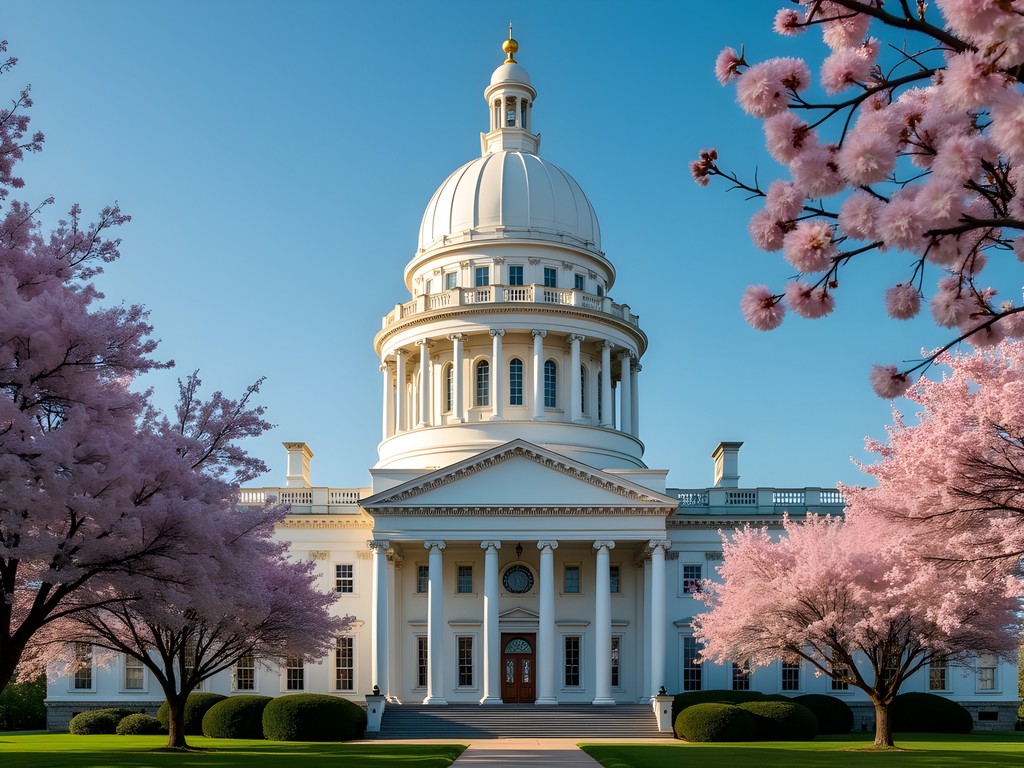
💡 Pro Tips
- Start early (around 9 AM) to beat both crowds and the midday heat
- Wear comfortable shoes with good arch support—colonial-era streets weren't designed for modern comfort
- Most historical sites are within a 15-minute walk of the central parking garages
Day One: The Foundations of Democracy
My judicial background perhaps explains why the Maryland State House became the cornerstone of my Annapolis experience. Standing in the Old Senate Chamber where George Washington resigned his military commission—effectively establishing civilian control over military power—I felt the weight of that precedent-setting moment.
The chamber has been meticulously restored to its 1783 appearance, allowing visitors to experience the space much as those revolutionary figures did. I recommend arriving when it opens at 9 AM to have this sacred democratic space largely to yourself—a rare opportunity for contemplative engagement with history.
From there, walk to the nearby Hammond-Harwood House, an architectural masterpiece showcasing the Georgian style that dominated America's early aesthetic sensibilities. The docents here offer remarkably detailed tours that connect the architectural elements to broader cultural and political movements of the era.
For lunch, the historic Middleton Tavern provides period-appropriate fare in an atmosphere where founding fathers once dined. I couldn't help but imagine the conversations that unfolded here—perhaps not unlike the thoughtful deliberations I engage in with fellow judges over lunch in Bangalore, though with considerably higher stakes for a nascent nation.
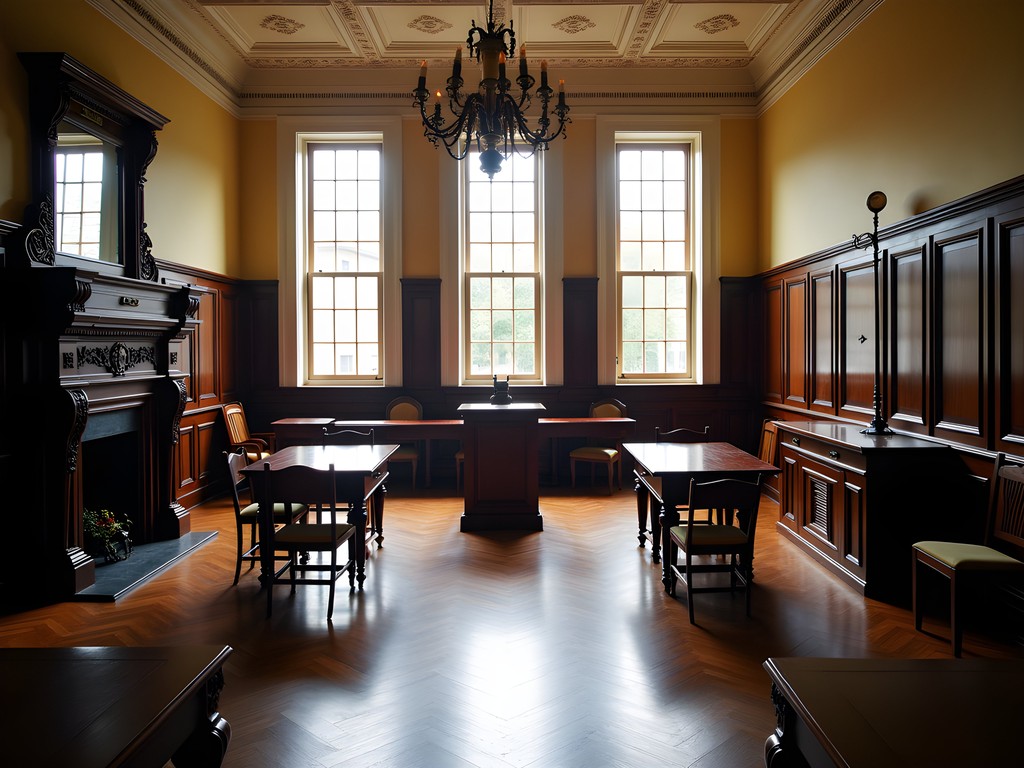
💡 Pro Tips
- The State House security resembles courthouse security—budget extra time and avoid bringing large bags
- Photography is permitted in most areas but without flash
- The Hammond-Harwood House requires timed entry tickets, book at least a day ahead
Day Two: Naval Traditions and Waterfront Heritage
The U.S. Naval Academy offers a fascinating counterpoint to Annapolis' civilian governance sites. As someone who has hiked volcanic ranges in Indonesia and witnessed nature's awesome power, I found unexpected parallels in the Academy's emphasis on respecting powerful forces beyond human control—be they oceanic or geological.
The Visitor Center provides free guided walking tours, though I opted for the self-guided option using the Naval Academy tour guide. The Naval Academy Chapel with its stunning stained glass and the crypt of John Paul Jones exemplify America's reverence for those who've defended its principles—not unlike how precedential court decisions are honored in the legal system.
After exploring the Academy grounds, I recommend spending the afternoon along the City Dock area. Here, the colonial-era Maritime Republic of Eastport comes alive through preserved warehouses and shipping infrastructure. The historic walking poles I brought proved invaluable on Annapolis' uneven brick sidewalks—offering stability while navigating history's literal ups and downs.
For an authentic maritime experience, consider booking one of the small sailing tours departing from the dock. Viewing Annapolis from the water provides context for understanding how geography shaped its historical significance as a port city and political center.

💡 Pro Tips
- Bring ID for Naval Academy entry—security protocols are strictly enforced
- The Visitor Center has lockers for items not permitted on grounds
- Schedule at least 3 hours for the Naval Academy to avoid feeling rushed
Culinary Constitution: Historical Dining on a Budget
In my legal practice, I've observed how cultural traditions often preserve aspects of history that formal records might miss. Nowhere is this more evident than in Annapolis' culinary landscape, where colonial-era recipes and ingredients continue to inform local cuisine.
For budget-conscious travelers, Annapolis offers several historically significant dining options that won't deplete your treasury. Chick & Ruth's Delly on Main Street has served traditional Maryland fare since 1965 and features menu items named after local politicians—a charming nod to Annapolis' ongoing political significance.
For an evening meal with colonial ambiance, Reynolds Tavern occupies a 1747 building and serves afternoon tea and dinner at surprisingly reasonable prices. Their basement beer cellar offers period-appropriate libations in an atmosphere reminiscent of revolutionary-era gatherings.
To enhance your historical dining experience, I recommend bringing a historical cookbook to recognize traditional Chesapeake dishes on local menus. Understanding the historical significance of Maryland crab cakes or oyster stew adds meaningful context to your culinary experiences.
During my visit, I packed collapsible food containers which proved invaluable for preserving leftovers from generous colonial-sized portions, allowing for picnic lunches in historic gardens the following day—a budget-friendly approach to extending your historical immersion.
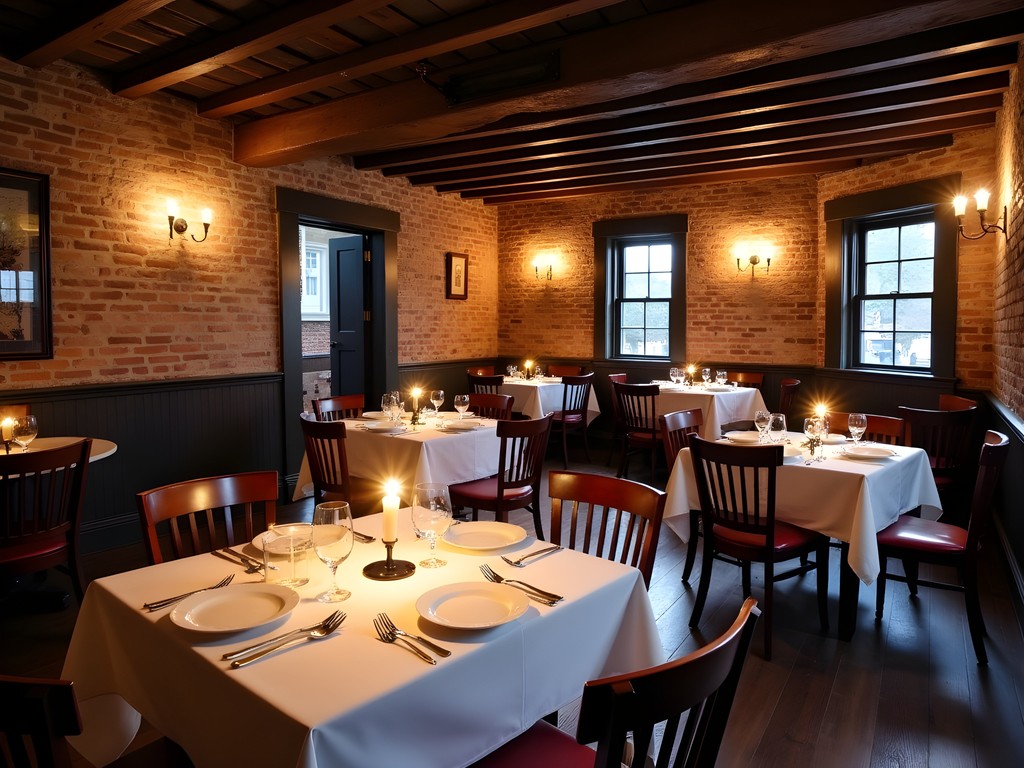
💡 Pro Tips
- Many historic restaurants offer happy hour specials that include colonial-inspired appetizers at reduced prices
- The Market House near City Dock provides affordable local seafood with historical context
- Water refill stations are available throughout the historic district—bring a reusable bottle
Preserving Democracy: Ethical Tourism in Historical Sites
As both a judge and an environmentally conscious traveler, I approach historical sites with the same ethical considerations that guide my legal decisions. Annapolis, like many historical destinations, faces challenges balancing preservation with accessibility.
During your visit, consider using the reusable tote bag I always carry for souvenir shopping, reducing plastic waste that threatens the Chesapeake Bay ecosystem surrounding this historical treasure. Similarly, the reef-safe sunscreen I applied before waterfront walks helps protect the bay's delicate ecological balance—an environmental justice consideration often overlooked by visitors.
I also recommend allocating time for the Historic Annapolis Museum, which thoughtfully addresses the city's complex relationship with slavery and Indigenous peoples. Much like in the courtroom, acknowledging historical injustices is essential to understanding the full context of America's democratic experiment.
Consider supporting preservation efforts by purchasing directly from the Historic Annapolis Foundation gift shop, where proceeds fund ongoing conservation. The legal principle of stewardship applies equally to historical landmarks—we are merely temporary custodians of these physical connections to our constitutional origins.

💡 Pro Tips
- Many historic sites suggest donations beyond their nominal entry fees—budget accordingly if you value preservation
- Photograph documentation rather than touching delicate historical surfaces
- Support locally-owned businesses in historical buildings that maintain architectural integrity
Final Thoughts
Walking Annapolis' colonial streets offers more than a simple history lesson—it provides a tangible connection to the principles that continue to guide American jurisprudence and governance. As a judge who has sought healing in Indonesia's volcanic landscapes and meaning in comparative legal traditions, I found unexpected restoration in these cobblestone streets where America's democratic experiment first took shape.
What makes Annapolis particularly special for couples is the intimate scale of its historical offerings. Unlike larger destinations where history can feel commercialized, Annapolis maintains an authenticity that invites meaningful conversation between partners about values, governance, and shared national identity.
As you plan your own constitutional journey through this remarkable city, remember that the most valuable souvenir isn't sold in gift shops but rather cultivated through thoughtful engagement with the past. The precedents established in these brick buildings and along these harbor waters continue to ripple through American society—much like how the volcanic forces I've witnessed in Indonesia shape the land for generations to come.
I invite you to approach Annapolis not just as tourists, but as witnesses to democracy's ongoing story—one where you, too, have a role to play.
✨ Key Takeaways
- Annapolis offers an intimate, budget-friendly alternative to larger historical destinations like Williamsburg or Philadelphia
- Spring visits provide ideal weather for walking tours plus blooming gardens at historical sites
- The city's compact layout allows couples to experience significant colonial landmarks without a vehicle
- Historical dining experiences can be incorporated without exceeding modest budgets
- Ethical tourism practices help preserve these irreplaceable historical resources for future generations
📋 Practical Information
Best Time to Visit
Mid-April through early June
Budget Estimate
$150-250 per couple for a weekend (excluding accommodations)
Recommended Duration
2-3 days
Difficulty Level
Easy

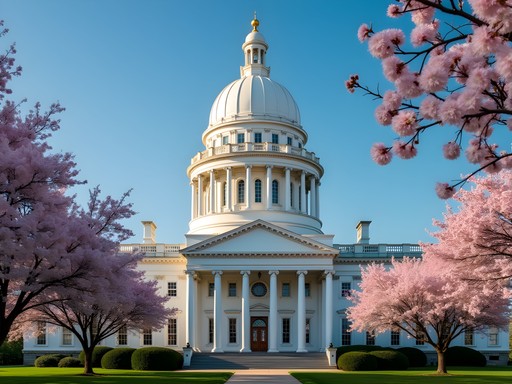
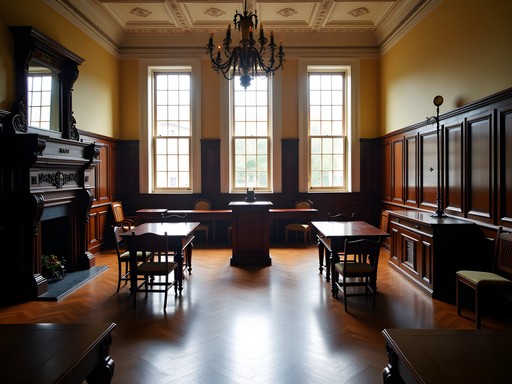
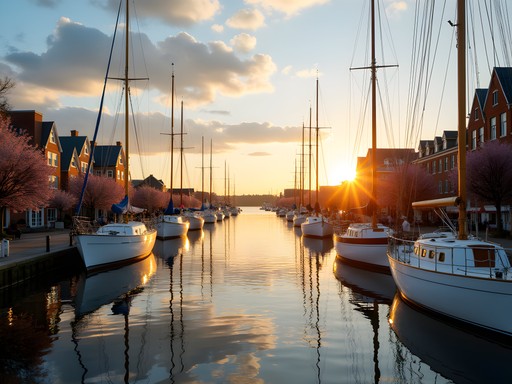
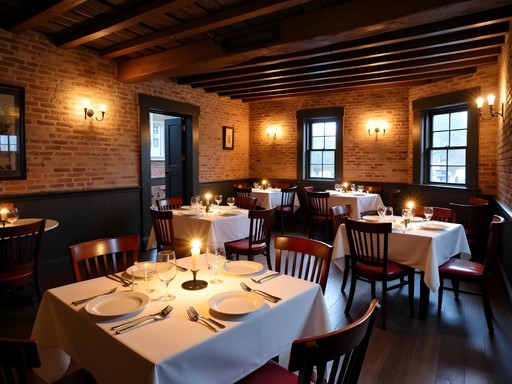
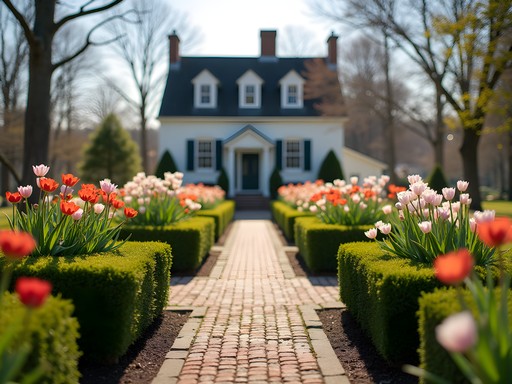



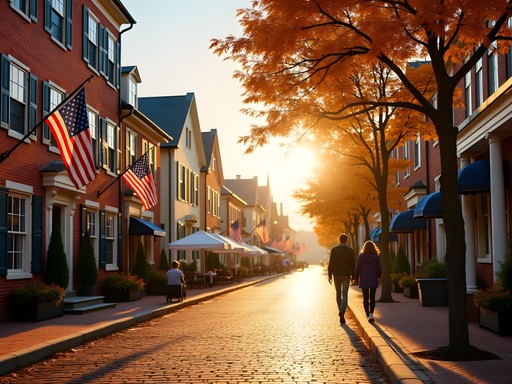






Comments
coolchamp6730
For anyone following Ana's walking tour, I highly recommend starting EARLY, especially in summer. We began at 8am and had most sites to ourselves until around 10. By noon, the historic district was packed! Also, don't miss the basement level of the Maryland Inn - there's a tiny jazz club called King of France Tavern that has amazing live music on weekends. Perfect end to a day of history walking!
Nicole Russell
That jazz club tip is gold! I missed that completely when I was there. Definitely on my list for next time!
vacationlegend
Planning a trip in April - is the Naval Academy part easy to do with kids (10 and 12)? Any special security things we need to know?
coolchamp6730
Just went with my nephew (11) and he loved it! Bring photo ID for adults. They have security checks at the gate but it's pretty quick. The kids especially loved seeing the midshipmen in uniform and the huge model ship collection. Definitely do the guided tour - worth every penny for the stories alone.
vacationlegend
Perfect, thanks! Adding that tour to our list.
Nicole Russell
Ana, I love how you structured this as a constitutional journey! I solo traveled to Annapolis last spring and found the self-guided approach perfect. One addition I'd suggest for history buffs is the William Paca House - the garden restoration is stunning and offers a peaceful break from the busier sites. For anyone walking in summer, I highly recommend bringing a refillable water bottle and pocket guidebook - the small size was perfect to pull out while navigating those charming but sometimes confusing colonial streets. Your budget dining section saved me - Galway Bay became my go-to spot!
winterguy
Your Day One itinerary is spot on! We followed almost the exact same route when we visited last fall. The State House tour was incredible - standing in the same room where Washington resigned his commission gave me chills. One tip though - we found that Middleton Tavern gets super crowded around dinner. We went for a late lunch instead and had a much better experience. Those crab cakes are worth planning around!
coolchamp6730
Good tip about Middleton! We made that mistake and waited almost 2 hours for dinner. Lunch is definitely the move.
winterguy
Yeah, or go super early for dinner like 5pm. The place is historic but not exactly a hidden gem anymore!
mountainace
Just got back from Annapolis last week! Wish I'd seen this guide before my trip, but still had a blast exploring the historic district.
Ana Moore
Thanks for reading! Hope you can use it as a reason to visit again someday!
photosnapper
Your State House dome photo is stunning! What time of day did you take that? The lighting is perfect.
Claire Hawkins
Ana, your comparison between legal precedent and walking through Annapolis' history really resonated with me! My family and I spent a week there last summer, and it was like stepping into different chapters of American history with each turn. We followed a similar route to your Day Two itinerary but added the William Paca House and Garden which was absolutely worth the entrance fee. My 10-year-old daughter was fascinated by the formal gardens and the stories of colonial life the guide shared. One tip for families: we found that breaking up the walking tour with harbor cruises gave everyone's feet a rest while still learning about the area's maritime history. The kids loved spotting the Naval Academy from the water! Has anyone tried any of the ghost tours? We're thinking about returning this Halloween season.
oceanqueen
We did the ghost tour last October! Super fun and not too scary for kids. The guide dressed in period costume really added to the experience.
roamlife
Love the section on budget-friendly historical dining! Chick & Ruth's Delly was a highlight of our trip.
travel_with_grandkids
Great guide! We found that taking the trolley tour first thing on our visit gave us a good overview before doing the walking portions. Saved our legs and helped us decide which spots to spend more time at. The State House was a highlight!
backpackqueen
Smart idea with the trolley first! I'm adding that to my plan. How long did the trolley tour take?
travel_with_grandkids
About 45 minutes for the full loop, but you can hop on/off all day with the ticket. Worth every penny!
beachclimber
Planning to visit next month with my parents who have some mobility issues. Are most of these sites wheelchair accessible? And is there a particular section of the walking tour that would be easiest to navigate? I've got a travel guidebook but it doesn't really address accessibility.
Claire Hawkins
When I visited with my grandmother last year, we found the Historic District had some challenges with cobblestones, but Main Street and the harbor area were much easier to navigate. The Visitors Center offers accessibility maps that show the flattest routes. Hope that helps!
beachclimber
That's super helpful, thanks Claire! We'll definitely start at the Visitors Center.
Venture X
Premium card with 2X miles, $300 travel credit, Priority Pass